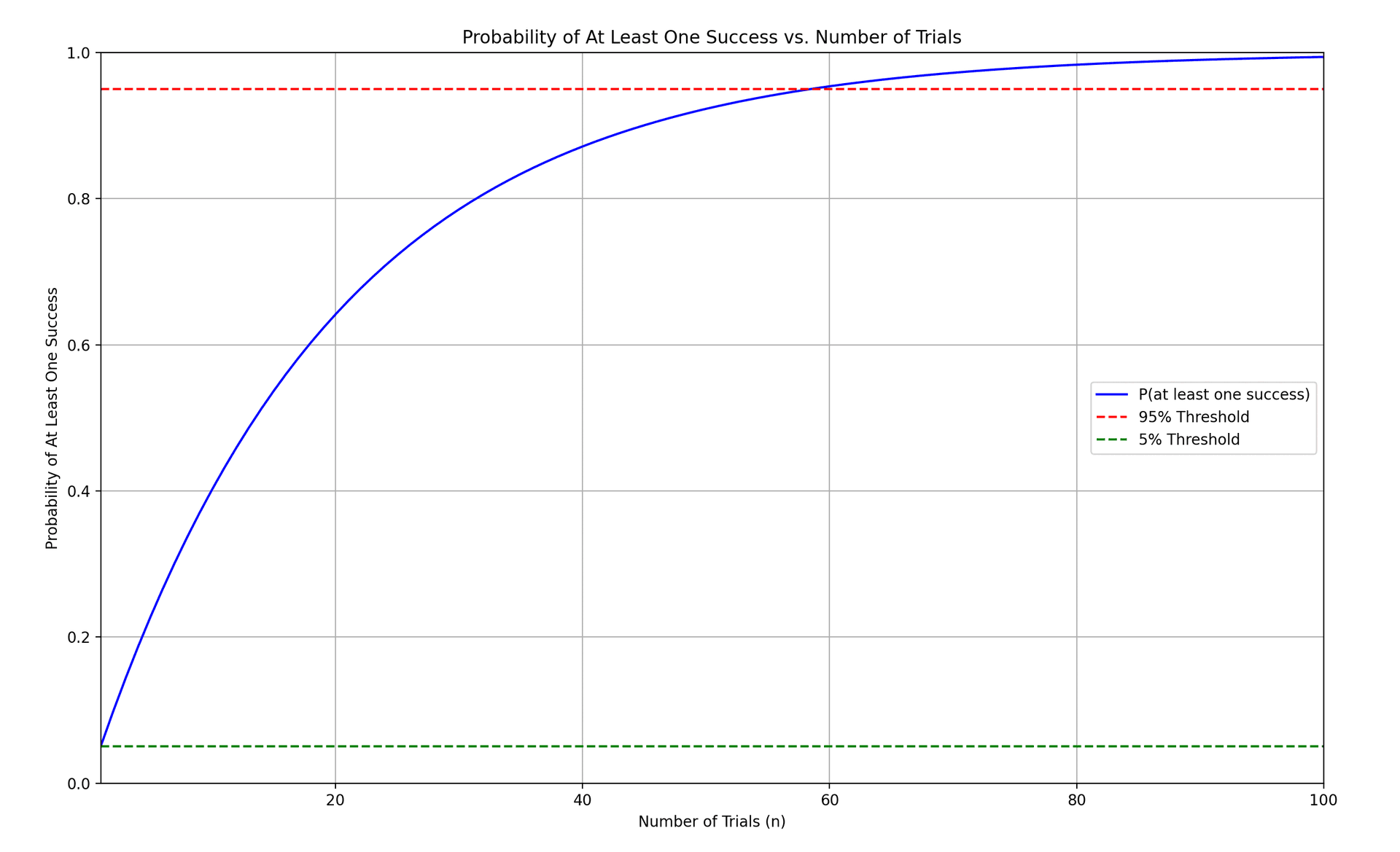The 59-Try Rule
TL;DR: To succeed in high-upside domains, focus on low-cost experiments (cost = ), accept the need for ~59 attempts, and target outcomes where one win yields at least (aka. 5900% return)
| Question | Meaning |
|---|---|
| What is the cost of each attempt? | |
| How many attempts are needed? | 59 attempts |
| How big must the payoff be to be worth it? | Greater than |
| What are we looking for? | Projects where a single success yields at least a 5900% return |
| Keep thinking which domains have this characteristic? | The answer is up to you |
| What's the key action strategy? | Control costs + Iterate quickly + Focus on exponential opportunities |

When building something new—be it a product, a startup, or even just testing ideas—failure is part of the journey. But how many tries does it take before you're likely to hit on success?
Let's break it down in plain language and a little math:
Say the idea has a 5% chance of success. That means a 95% chance of failure in a single trial
The probability of failing every time across tries? That's .
What we care about is the flip side—getting at least one success. That probability is:
Let's say we want to be 95% sure of getting at least one win. We set up the inequality:
Let's do some math magic. Solve this equation for n, then we have:
So, if each of your ideas has only a 5% chance of working, you need to try at least 59 times to be 95% sure that one of them will succeed.
Deep Dive: Trial Cost vs. 5900% ROI
So let's say every trial—be it launching a product, running an ad, testing a prototype—costs . If it takes 59 trials to have a 95% chance of success (based on 5% success probability per attempt), then the expected total cost is:
What Does an ROI > 5900% Even Mean?
We're asking: Is there anything worth doing that, if successful, gives us a return that's 59 times the cost? That is:
The answer is up to you.
Tags: Investment